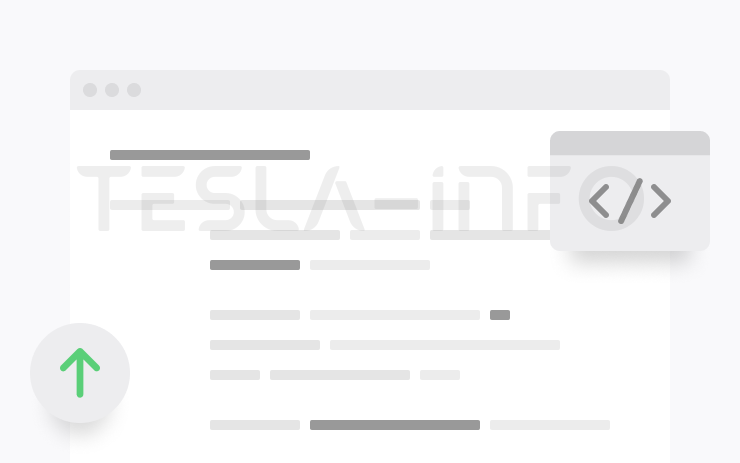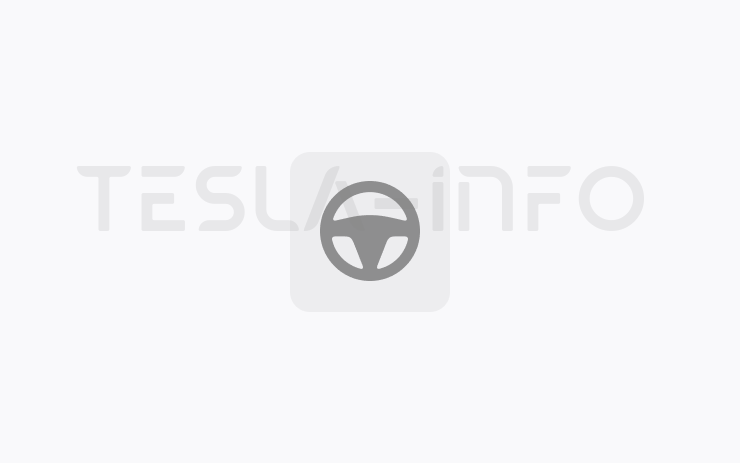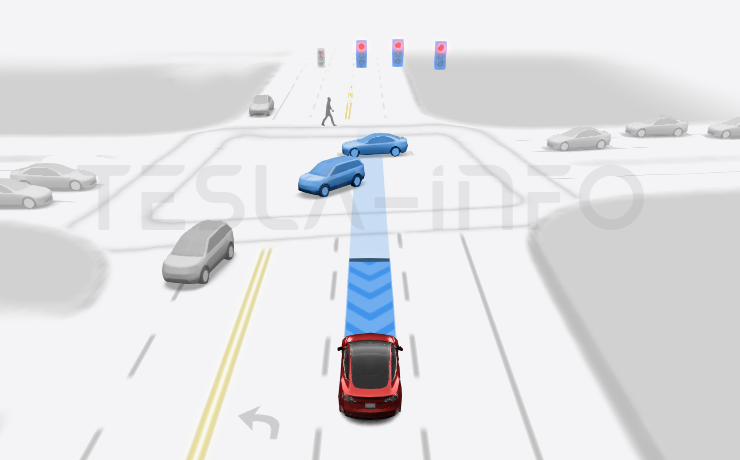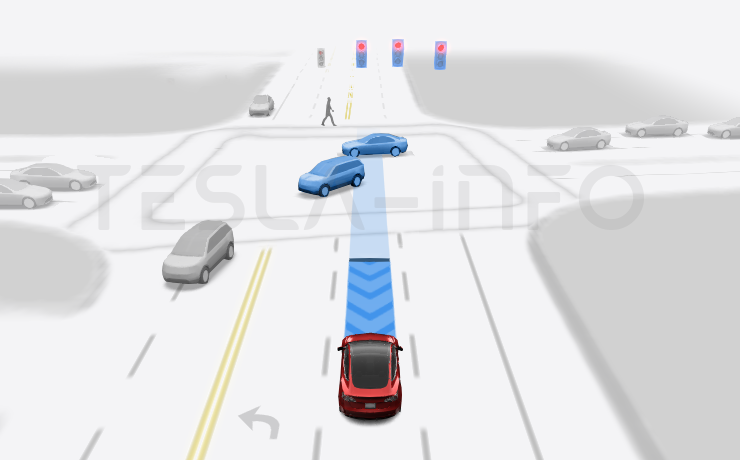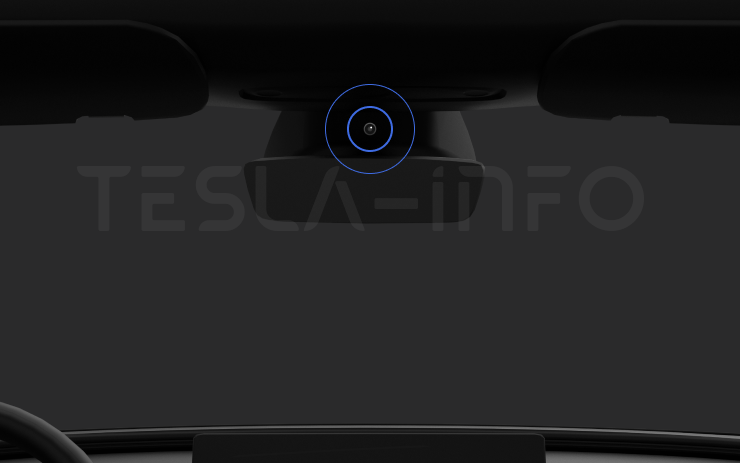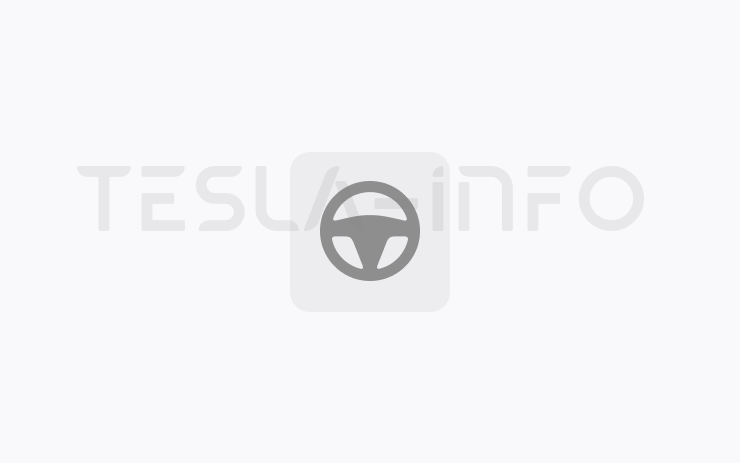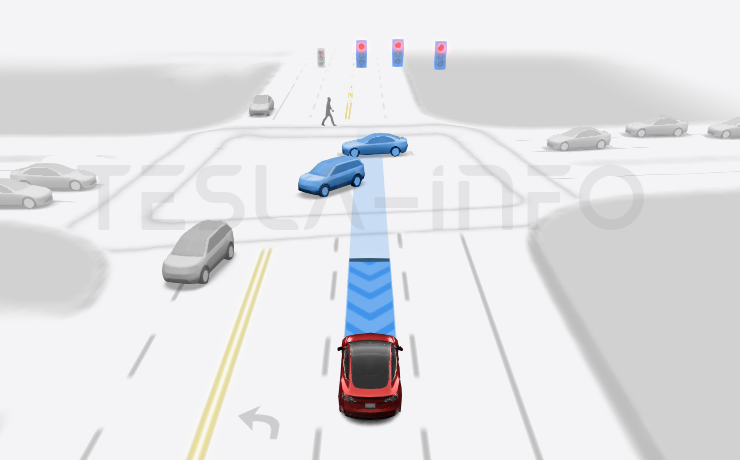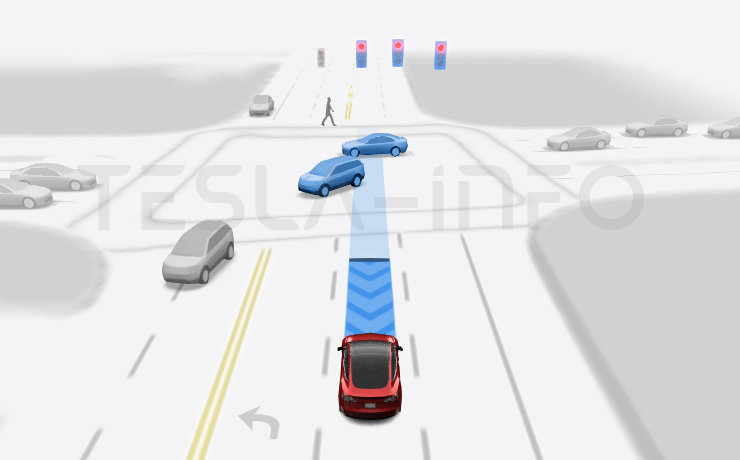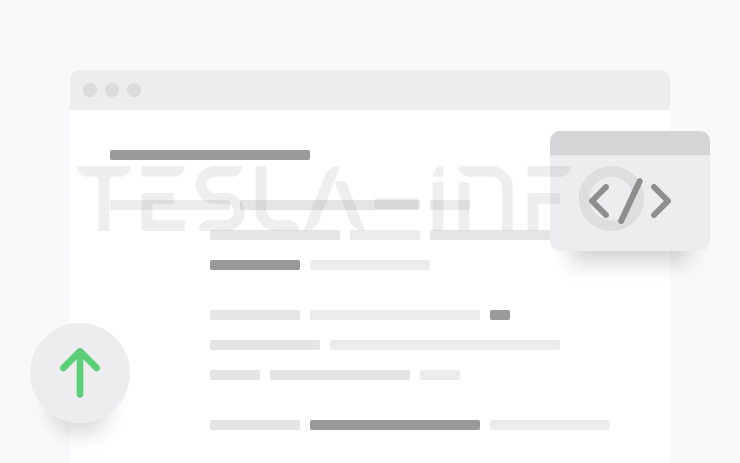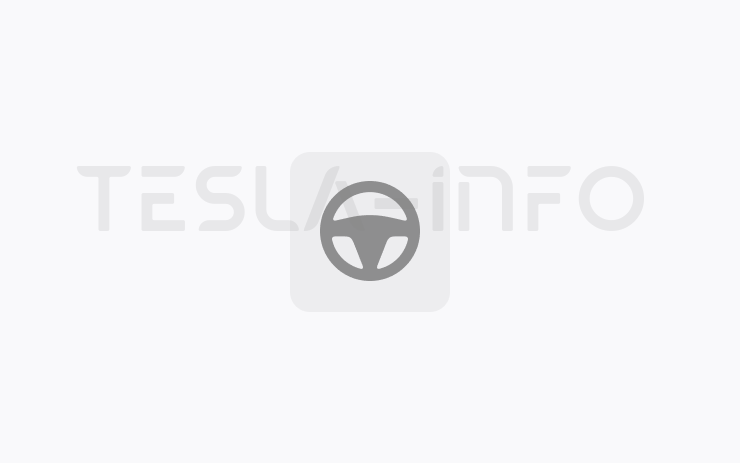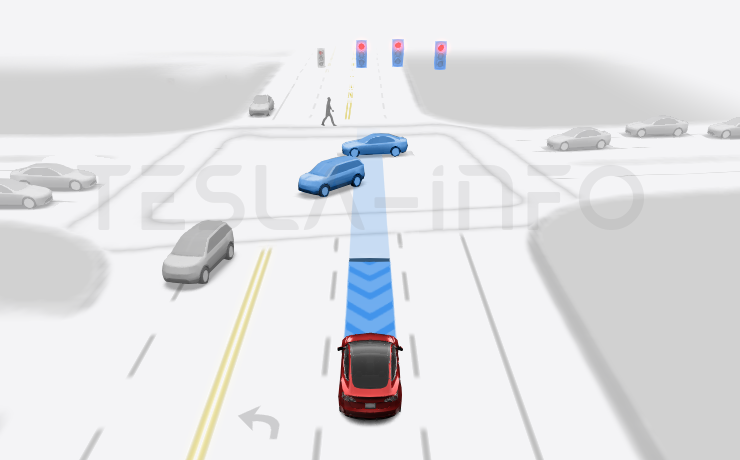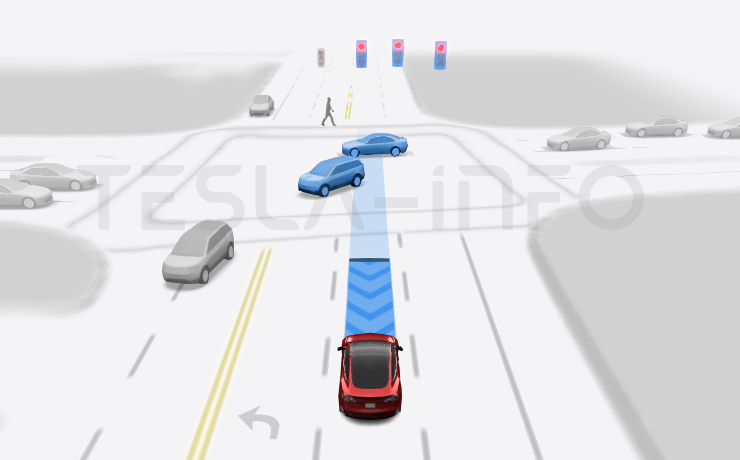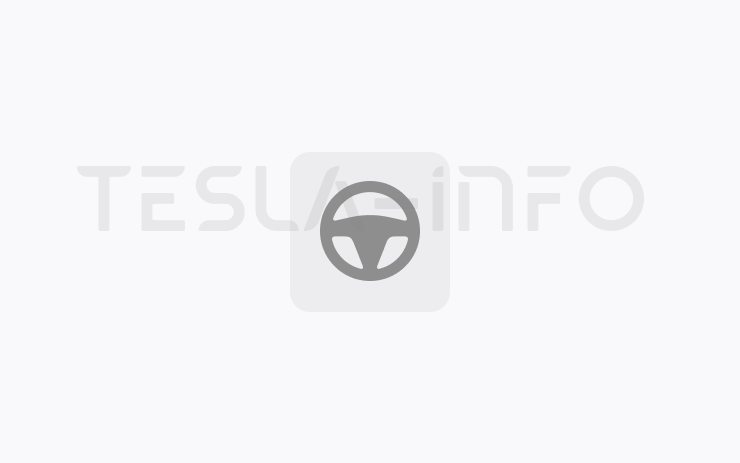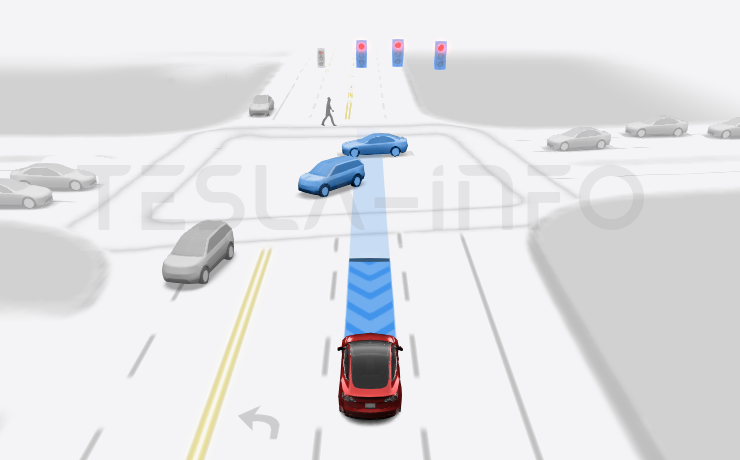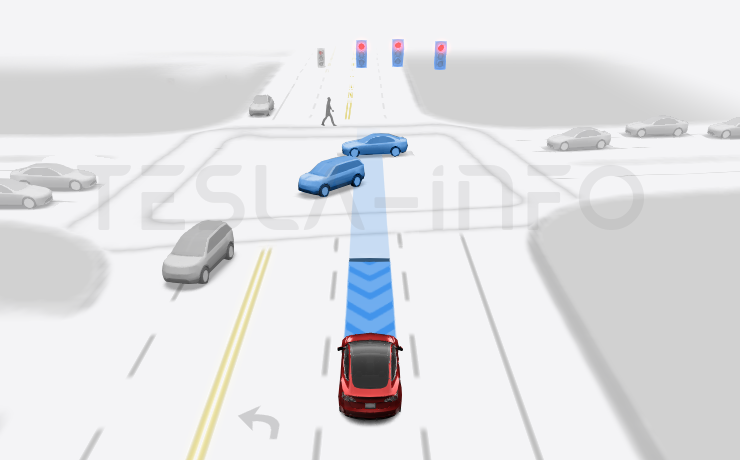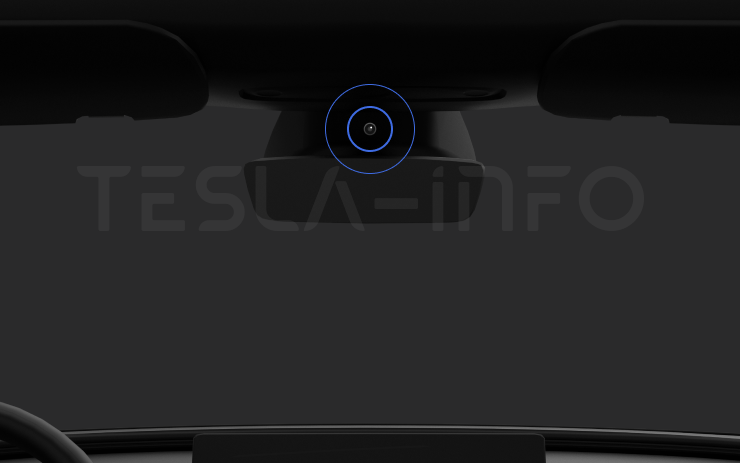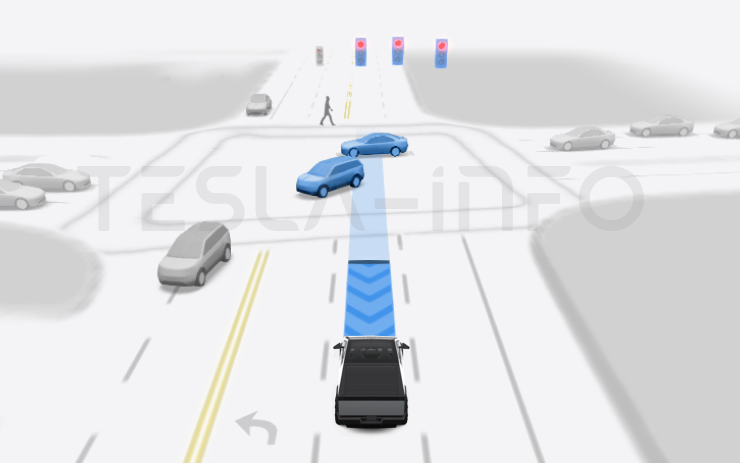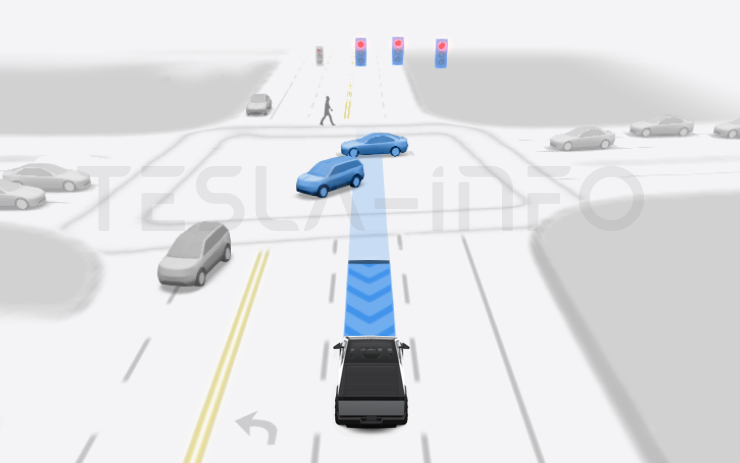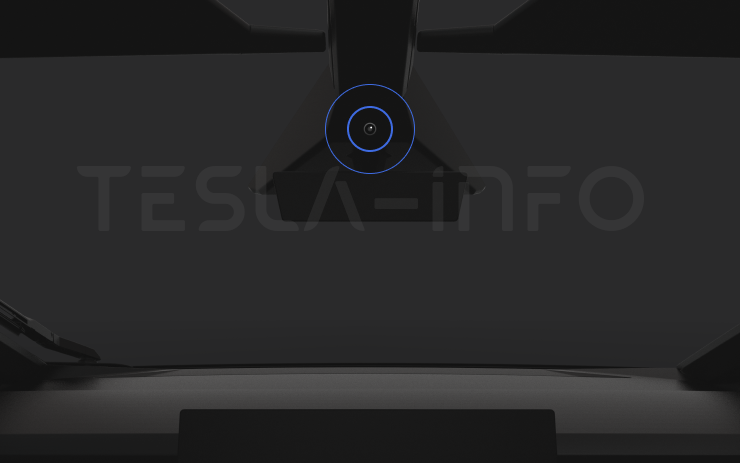Tesla Software Release 2024.33.5
Last updated 26-Nov-2025
Tesla Software release 2024.33.5 including ASS (Actually Smart Summon), FSD (Supervised) v12.5.4.2, Full Self-Driving (Supervised), Minor Fixes, Vision-Based Attention Monitoring.
Included releases
2024.33.5, (<0.1% of cars)
Regional coverage by model
North AmericaMS-M3--Europe-----RoW-----
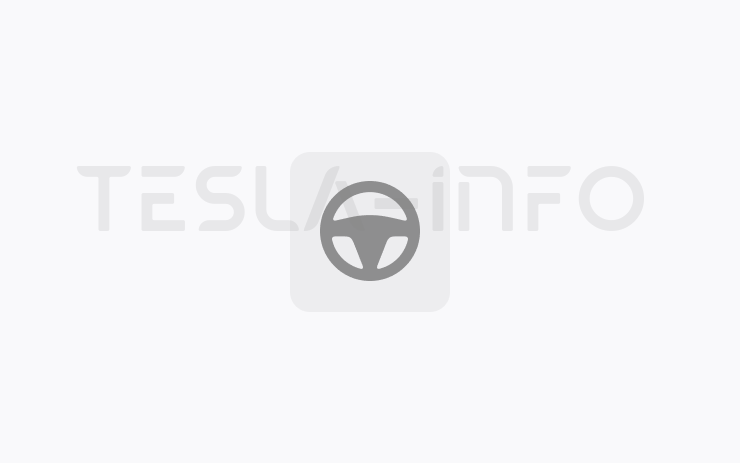
- Seen in BR CA TW UA US
- Seen on MS(2021+) MX(2022+) M3 MY M3(H)
- Seen on AP Hardware HW3 HW4
- Seen on MCU hardware Intel
ASS (Actually Smart Summon) (part of 2024.33.5)
Buckle up for the ride of your life, except, surprise! You're not in the car. ASS (Actually Smart Summon) allows your vehicle to come to you, or head to a spot that you choose, all on its own. It’s like magic, but with more tech and less wand-waving.
Additionally, Dumb Summon allows you to move your Tesla forward or back with simple controls directly in your mobile app.
To use, open your Tesla app, hit the Summon tab, and get a live feed from your car’s cameras to guide your supervision.
- COME TO ME: Press and hold to have your Tesla come to you.
- GO TO TARGET: Set where you want your Tesla to go, then press and hold to send it on its merry way.
You can halt your journey anytime by just letting go of the button. See your Owner's Manual for additional details.
ASS and Dumb Summon should only be used in parking lots or driveways. Keep an eye on your car and its surroundings at all times. Stay vigilant, especially around the fast and the furious (people, bikes, and other cars). You are still responsible for your vehicle, so watch as it drives and stop it if necessary.
Note: ASS requires the Tesla mobile app version 4.37.0 or later.
Now Includes:
- Public/High-Speed Roads pause your ASS maneuver
- Improved Blocked Camera Aborts
- Reduced False Positive Collision Mitigation Aborts
- Refined Dumb Summon behavior at curbs
- Added Custom/Fart Completion Sounds
Coming Soon:
- HomeLink & myQ garage integration
- Usage without Continuous Press

- Seen in BR CA UA US
- Seen on MX MS(2021+) MX(2022+) M3 MY M3(H)
- Seen on AP Hardware HW3 HW4
- Seen on MCU hardware Intel
FSD (Supervised) v12.5.4.2 (part of 2024.33.5)
FSD (Supervised) v12 upgrades the city-streets driving stack to a single end-to-end neural network trained on millions of video clips, replacing over 300k lines of explicit C++ code.
Includes vision-based attention monitoring with sunglasses.
Upcoming Improvements:
- Earlier and more natural lane change decisions.
- End-to-End on highway.
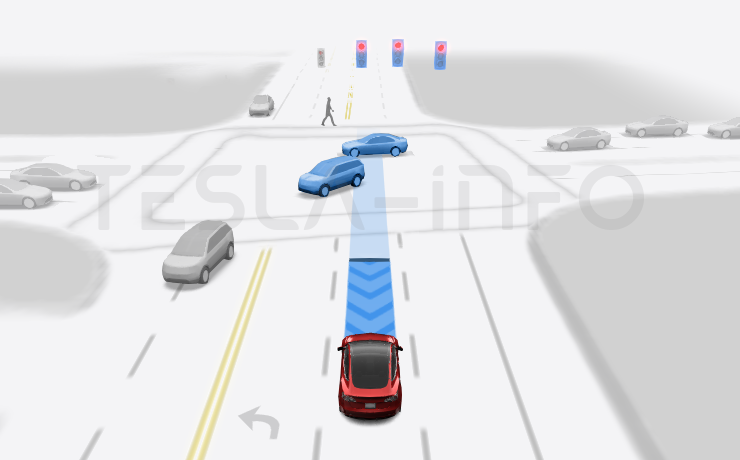
- Seen in BR CA UA US
- Seen on MX MS(2021+) MX(2022+) M3 MY M3(H)
- Seen on AP Hardware HW3 HW4
- Seen on MCU hardware Intel
Full Self-Driving (Supervised) (part of 2024.33.5)
Under your supervision, Full Self-Driving (Supervised) can drive your Tesla almost anywhere. It will make lane changes, select forks to follow your navigation route, navigate around other vehicles and objects, and make left and right turns. You and anyone you authorize must use additional caution and remain attentive. It does not make your vehicle autonomous. Do not become complacent.
Full Self-Driving (Supervised) is enabled on your vehicle. To use the feature, pull the drive stalk down once. You can disable Full Self-Driving (Supervised) in Autopilot Settings.
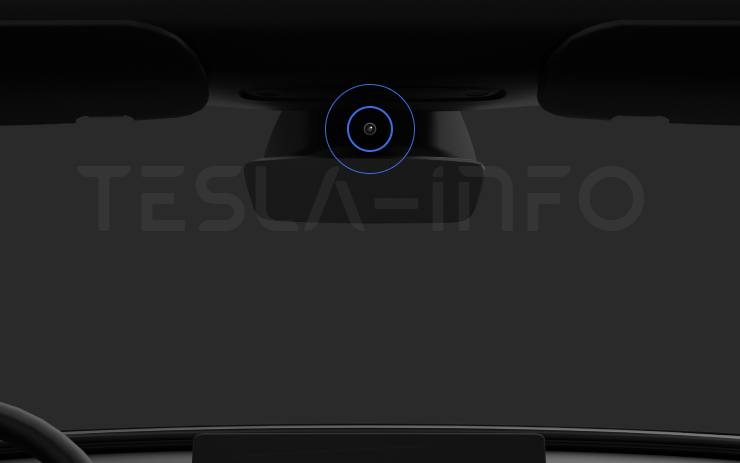
- Seen in BR CA UA US
- Seen on MS(2021+) MX(2022+) M3 MY M3(H)
- Seen on AP Hardware HW3 HW4
- Seen on MCU hardware Intel
Vision-Based Attention Monitoring (part of 2024.33.5)
When Full Self-Driving (Supervised) is enabled, the driver monitoring system primarily relies on the cabin camera to determine driver attentiveness. Cabin camera must have clear visibility (e.g., camera is not occluded, eyes, arms, are visible, there is sufficient cabin illumination, and the driver is looking forward at the road). In other circumstances, the driver monitoring system will primarily rely on torque-based (steering wheel) monitoring to detect driver attentiveness.
If the cabin camera detects inattentiveness, a warning will appear. The warning can be dismissed by the driver immediately reverting their attention back to the road ahead. Warnings will escalate depending on the nature and frequency of detected inattentiveness, with continuous inattention leading to a Strikeout.
Minor Fixes (part of 2024.33.5)
This release contains minor fixes and improvements
Other release notes for the family: 2024.33
ASS (Actually Smart Summon) (part of 2024.33.40)
Buckle up for the ride of your life, except, surprise! You're not in the car. ASS (Actually Smart Summon) allows your vehicle to come to you, or head to a spot that you choose, all on its own. It’s like magic, but with more tech and less wand-waving.
Additionally, Dumb Summon allows you to move your Tesla forward or back with simple controls directly in your mobile app.
To use, open your Tesla app, hit the Summon tab, and get a live feed from your car’s cameras to guide your supervision.
- COME TO ME: Press and hold to have your Tesla come to you.
- GO TO TARGET: Set where you want your Tesla to go, then press and hold to send it on its merry way.
You can halt your journey anytime by just letting go of the button. See your Owner's Manual for additional details.
ASS and Dumb Summon should only be used in parking lots or driveways. Keep an eye on your car and its surroundings at all times. Stay vigilant, especially around the fast and the furious (people, bikes, and other cars). You are still responsible for your vehicle, so watch as it drives and stop it if necessary.
Note: ASS requires the Tesla mobile app version 4.37.0 or later.
Now Includes:
- Public/High-Speed Roads pause your ASS maneuver
- Improved Blocked Camera Aborts
- Reduced False Positive Collision Mitigation Aborts
- Refined Dumb Summon behavior at curbs
- Added Custom/Fart Completion Sounds
Coming Soon:
- HomeLink & myQ garage integration
- Usage without Continuous Press
Seen in CA US
Seen on MS(2021+) MX(2022+) M3 MY M3(H)
Seen on AP versions AP4
Seen on MCU hardware Ryzen
FSD (Supervised) v12.5.6.4 (part of 2024.33.40)
FSD (Supervised) v12 upgrades the city-streets driving stack to a single end-to-end neural network trained on millions of video clips, replacing over 300k lines of explicit C++ code.
- Includes vision-based attention monitoring with sunglasses
- Includes End to End on Highway
- Earlier and more natural lane change decisions
- Updated Speed Profiles to now apply to roads and highways with 50mph (80kph) or higher speed limit
- Auto Set Speed has been updated to Max Speed
Seen in CA US
Seen on MS(2021+) MX(2022+) M3 MY M3(H)
Seen on AP versions AP4
Seen on MCU hardware Ryzen
Full Self-Driving (Supervised) (part of 2024.33.40)
Under your supervision, Full Self-Driving (Supervised) can drive your Tesla almost anywhere. It will make lane changes, select forks to follow your navigation route, navigate around other vehicles and objects, and make left and right turns. You and anyone you authorize must use additional caution and remain attentive. It does not make your vehicle autonomous. Do not become complacent.
Full Self-Driving (Supervised) is enabled on your vehicle. To use the feature, press the right scroll wheel button once. You can disable Full Self-Driving (Supervised) in Autopilot Settings.
Seen in CA US
Seen on MS(2021+) MX(2022+) M3 MY M3(H)
Seen on AP versions AP4
Seen on MCU hardware Ryzen
Vision-Based Attention Monitoring (part of 2024.33.40)
When Full Self-Driving (Supervised) is enabled, the driver monitoring system primarily relies on the cabin camera to determine driver attentiveness. Cabin camera must have clear visibility (e.g., camera is not occluded, eyes, arms, are visible, there is sufficient cabin illumination, and the driver is looking forward at the road). In other circumstances, the driver monitoring system will primarily rely on torque-based (steering wheel) monitoring to detect driver attentiveness.
If the cabin camera detects inattentiveness, a warning will appear. The warning can be dismissed by the driver immediately reverting their attention back to the road ahead. Warnings will escalate depending on the nature and frequency of detected inattentiveness, with continuous inattention leading to a Strikeout.
Seen in CA US
Seen on MS(2021+) MX(2022+) M3 MY M3(H)
Seen on AP versions AP4
Seen on MCU hardware Ryzen
Update to Data Sharing (part of 2024.33.40)
Improve your vehicle's safety and convenience features such as emergency vehicle detection, by choosing to opt-in and share sound detection data with Tesla a short audio recording (up to 10 seconds) collected when a siren is approaching. Even if you opt-in to sharing this information with Tesla, sound detection data is not associated with your account or VIN.
Seen in CA US
Seen on MS(2021+) MX(2022+) M3 MY M3(H)
Seen on AP versions AP4
Seen on MCU hardware Ryzen
ASS (Actually Smart Summon) (part of 2024.33.35)
Buckle up for the ride of your life, except, surprise! You're not in the car. ASS (Actually Smart Summon) allows your vehicle to come to you, or head to a spot that you choose, all on its own. It’s like magic, but with more tech and less wand-waving.
Additionally, Dumb Summon allows you to move your Tesla forward or back with simple controls directly in your mobile app.
To use, open your Tesla app, hit the Summon tab, and get a live feed from your car’s cameras to guide your supervision.
- COME TO ME: Press and hold to have your Tesla come to you.
- GO TO TARGET: Set where you want your Tesla to go, then press and hold to send it on its merry way.
You can halt your journey anytime by just letting go of the button. See your Owner's Manual for additional details.
ASS and Dumb Summon should only be used in parking lots or driveways. Keep an eye on your car and its surroundings at all times. Stay vigilant, especially around the fast and the furious (people, bikes, and other cars). You are still responsible for your vehicle, so watch as it drives and stop it if necessary.
Note: ASS requires the Tesla mobile app version 4.37.0 or later.
Now Includes:
- Public/High-Speed Roads pause your ASS maneuver
- Improved Blocked Camera Aborts
- Reduced False Positive Collision Mitigation Aborts
- Refined Dumb Summon behavior at curbs
- Added Custom/Fart Completion Sounds
Coming Soon:
- HomeLink & myQ garage integration
- Usage without Continuous Press
Seen in CA US
Seen on MS(2021+) MX(2022+) M3 MY M3(H)
Seen on AP versions AP4
Seen on MCU hardware Ryzen
FSD (Supervised) v12.5.6.3 (part of 2024.33.35)
FSD (Supervised) v12 upgrades the city-streets driving stack to a single end-to-end neural network trained on millions of video clips, replacing over 300k lines of explicit C++ code.
- Includes vision-based attention monitoring with sunglasses
- Includes End to End on Highway
- Earlier and more natural lane change decisions
- Updated Speed Profiles to now apply to roads and highways with 50mph (80kph) or higher speed limit
- Auto Set Speed has been updated to Max Speed
Seen in CA US
Seen on MS(2021+) MX(2022+) M3 MY M3(H)
Seen on AP versions AP4
Seen on MCU hardware Ryzen
Full Self-Driving (Supervised) (part of 2024.33.35)
Under your supervision, Full Self-Driving (Supervised) can drive your Tesla almost anywhere. It will make lane changes, select forks to follow your navigation route, navigate around other vehicles and objects, and make left and right turns. You and anyone you authorize must use additional caution and remain attentive. It does not make your vehicle autonomous. Do not become complacent.
Full Self-Driving (Supervised) is enabled on your vehicle. To use the feature, pull the drive stalk down once. You can disable Full Self-Driving (Supervised) in Autopilot Settings.
Seen in CA US
Seen on MS(2021+) MX(2022+) M3 MY M3(H)
Seen on AP versions AP4
Seen on MCU hardware Ryzen
Vision-Based Attention Monitoring (part of 2024.33.35)
When Full Self-Driving (Supervised) is enabled, the driver monitoring system primarily relies on the cabin camera to determine driver attentiveness. Cabin camera must have clear visibility (e.g., camera is not occluded, eyes, arms, are visible, there is sufficient cabin illumination, and the driver is looking forward at the road). In other circumstances, the driver monitoring system will primarily rely on torque-based (steering wheel) monitoring to detect driver attentiveness.
If the cabin camera detects inattentiveness, a warning will appear. The warning can be dismissed by the driver immediately reverting their attention back to the road ahead. Warnings will escalate depending on the nature and frequency of detected inattentiveness, with continuous inattention leading to a Strikeout.
Seen in CA US
Seen on MS(2021+) MX(2022+) M3 MY M3(H)
Seen on AP versions AP4
Seen on MCU hardware Ryzen
Minor Fixes (part of 2024.33.35)
This release contains minor fixes and improvements
Seen in US
Seen on MY M3(H)
Seen on AP versions AP4
ASS (Actually Smart Summon) (part of 2024.33.30)
Buckle up for the ride of your life, except, surprise! You're not in the car. ASS (Actually Smart Summon) allows your vehicle to come to you, or head to a spot that you choose, all on its own. It’s like magic, but with more tech and less wand-waving.
Additionally, Dumb Summon allows you to move your Tesla forward or back with simple controls directly in your mobile app.
To use, open your Tesla app, hit the Summon tab, and get a live feed from your car’s cameras to guide your supervision.
- COME TO ME: Press and hold to have your Tesla come to you.
- GO TO TARGET: Set where you want your Tesla to go, then press and hold to send it on its merry way.
You can halt your journey anytime by just letting go of the button. See your Owner's Manual for additional details.
ASS and Dumb Summon should only be used in parking lots or driveways. Keep an eye on your car and its surroundings at all times. Stay vigilant, especially around the fast and the furious (people, bikes, and other cars). You are still responsible for your vehicle, so watch as it drives and stop it if necessary.
Note: ASS requires the Tesla mobile app version 4.37.0 or later.
Now Includes:
- Public/High-Speed Roads pause your ASS maneuver
- Improved Blocked Camera Aborts
- Reduced False Positive Collision Mitigation Aborts
- Refined Dumb Summon behavior at curbs
- Added Custom/Fart Completion Sounds
Coming Soon:
- HomeLink & myQ garage integration
- Usage without Continuous Press
Seen in CA US
Seen on MY M3(H)
FSD (Supervised) v12.5.6.2 (part of 2024.33.30)
FSD (Supervised) v12 upgrades the city-streets driving stack to a single end-to-end neural network trained on millions of video clips, replacing over 300k lines of explicit C++ code.
- Includes vision-based attention monitoring with sunglasses
- Includes End to End on Highway
- Earlier and more natural lane change decisions
- Updated Driver Profiles
- Auto Set Speed has been updated to Max Speed
Seen in CA US
Seen on MY M3(H)
Full Self-Driving (Supervised) (part of 2024.33.30)
Under your supervision, Full Self-Driving (Supervised) can drive your Tesla almost anywhere. It will make lane changes, select forks to follow your navigation route, navigate around other vehicles and objects, and make left and right turns. You and anyone you authorize must use additional caution and remain attentive. It does not make your vehicle autonomous. Do not become complacent.
Full Self-Driving (Supervised) is enabled on your vehicle. To use the feature, pull the drive stalk down once. You can disable Full Self-Driving (Supervised) in Autopilot Settings.
Seen in CA US
Seen on MY M3(H)
ASS (Actually Smart Summon) (part of 2024.33.25)
Buckle up for the ride of your life, except, surprise! You're not in the car. ASS (Actually Smart Summon) allows your vehicle to come to you, or head to a spot that you choose, all on its own. It’s like magic, but with more tech and less wand-waving.
Additionally, Dumb Summon allows you to move your Tesla forward or back with simple controls directly in your mobile app.
To use, open your Tesla app, hit the Summon tab, and get a live feed from your car’s cameras to guide your supervision.
- COME TO ME: Press and hold to have your Tesla come to you.
- GO TO TARGET: Set where you want your Tesla to go, then press and hold to send it on its merry way.
You can halt your journey anytime by just letting go of the button. See your Owner's Manual for additional details.
ASS and Dumb Summon should only be used in parking lots or driveways. Keep an eye on your car and its surroundings at all times. Stay vigilant, especially around the fast and the furious (people, bikes, and other cars). You are still responsible for your vehicle, so watch as it drives and stop it if necessary.
Note: ASS requires the Tesla mobile app version 4.37.0 or later.
Now Includes:
- Improved Public/High-Speed Road Aborts
- Improved Blocked Camera Aborts
- Reduced False Positive Collision Mitigation Aborts
- Refined Dumb Summon
- Added Custom/Fart Completion Sounds
Coming Soon:
- HomeLink & myQ garage integration
- Usage without Continuous Press
Seen in CA US
Seen on MS(2021+) MX(2022+) MY M3(H)
FSD (Supervised) v12.5.6.1 (part of 2024.33.25)
FSD (Supervised) v12 upgrades the city-streets driving stack to a single end-to-end neural network trained on millions of video clips, replacing over 300k lines of explicit C++ code.
- Includes vision-based attention monitoring with sunglasses.
- Includes End to End on Highway
- Earlier and more natural lane change decisions
- Updated Driver Profiles
- Auto Set Speed has been updated to Max Speed
Seen in CA US
Seen on MS(2021+) MX(2022+) MY M3(H)
Full Self-Driving (Supervised) (part of 2024.33.25)
Under your supervision, Full Self-Driving (Supervised) can drive your Tesla almost anywhere. It will make lane changes, select forks to follow your navigation route, navigate around other vehicles and objects, and make left and right turns. You and anyone you authorize must use additional caution and remain attentive. It does not make your vehicle autonomous. Do not become complacent.
Full Self-Driving (Supervised) is enabled on your vehicle. To use the feature, pull the drive stalk down once. You can disable Full Self-Driving (Supervised) in Autopilot Settings.
Seen in CA US
Seen on MS(2021+) MX(2022+) MY M3(H)
Vision-Based Attention Monitoring (part of 2024.33.25)
When Full Self-Driving (Supervised) is enabled, the driver monitoring system primarily relies on the cabin camera to determine driver attentiveness. Cabin camera must have clear visibility (e.g., camera is not occluded, eyes, arms, are visible, there is sufficient cabin illumination, and the driver is looking forward at the road). In other circumstances, the driver monitoring system will primarily rely on torque-based (steering wheel) monitoring to detect driver attentiveness.
If the cabin camera detects inattentiveness, a warning will appear. The warning can be dismissed by the driver immediately reverting their attention back to the road ahead. Warnings will escalate depending on the nature and frequency of detected inattentiveness, with continuous inattention leading to a Strikeout.
Seen in CA US
Seen on MS(2021+) MX(2022+) MY M3(H)
FSD (Supervised) v12.5.5.2 (part of 2024.33.15)
FSD (Supervised) v12 upgrades the city-streets driving stack to a single end-to-end neural network trained on millions of video clips, replacing over 300k lines of explicit C++ code.
- Includes vision-based attention monitoring with sunglasses
- Includes End to End on Highway
Upcoming Improvements:
- Earlier and more natural lane change decisions
- Improved performance in parking lots
- Improved performance at intersections and stops
- Introduction of Speed Profile
Note: This is an early access build. You and anyone you authorize must use additional caution and remain attentive. It does not make your vehicle autonomous. Do not become complacent.
Seen in US
Seen on CT
Full Self-Driving (Supervised) (part of 2024.33.15)
Under your supervision, Full Self-Driving (Supervised) can drive your Tesla almost anywhere. It will make lane changes, select forks to follow your navigation route, navigate around other vehicles and objects, and make left and right turns. You and anyone you authorize must use additional caution and remain attentive. It does not make your vehicle autonomous. Do not become complacent.
Full Self-Driving (Supervised) is enabled on your vehicle. To use the feature, press the right scroll wheel button once. You can disable Full Self-Driving (Supervised) in Autopilot Settings.
Seen in US
Seen on CT
Vision-Based Attention Monitoring (part of 2024.33.15)
When Full Self-Driving (Supervised) is enabled, the driver monitoring system primarily relies on the cabin camera to determine driver attentiveness. Cabin camera must have clear visibility (e.g., camera is not occluded, eyes, arms, are visible, there is sufficient cabin illumination, and the driver is looking forward at the road). In other circumstances, the driver monitoring system will primarily rely on torque-based (steering wheel) monitoring to detect driver attentiveness.
If the cabin camera detects inattentiveness, a warning will appear. The warning can be dismissed by the driver immediately reverting their attention back to the road ahead. Warnings will escalate depending on the nature and frequency of detected inattentiveness, with continuous inattention leading to a Strikeout.
Seen in US
Seen on CT
ASS (Actually Smart Summon) (part of 2024.33.5)
Buckle up for the ride of your life, except, surprise! You're not in the car. ASS (Actually Smart Summon) allows your vehicle to come to you, or head to a spot that you choose, all on its own. It’s like magic, but with more tech and less wand-waving.
Additionally, Dumb Summon allows you to move your Tesla forward or back with simple controls directly in your mobile app.
To use, open your Tesla app, hit the Summon tab, and get a live feed from your car’s cameras to guide your supervision.
- COME TO ME: Press and hold to have your Tesla come to you.
- GO TO TARGET: Set where you want your Tesla to go, then press and hold to send it on its merry way.
You can halt your journey anytime by just letting go of the button. See your Owner's Manual for additional details.
ASS and Dumb Summon should only be used in parking lots or driveways. Keep an eye on your car and its surroundings at all times. Stay vigilant, especially around the fast and the furious (people, bikes, and other cars). You are still responsible for your vehicle, so watch as it drives and stop it if necessary.
Note: ASS requires the Tesla mobile app version 4.37.0 or later.
Now Includes:
- Public/High-Speed Roads pause your ASS maneuver
- Improved Blocked Camera Aborts
- Reduced False Positive Collision Mitigation Aborts
- Refined Dumb Summon behavior at curbs
- Added Custom/Fart Completion Sounds
Coming Soon:
- HomeLink & myQ garage integration
- Usage without Continuous Press
Seen in BR CA TW UA US
Seen on MS(2021+) MX(2022+) M3 MY M3(H)
Seen on AP versions AP3 AP4
Seen on MCU hardware Intel
FSD (Supervised) v12.5.4.2 (part of 2024.33.5)
FSD (Supervised) v12 upgrades the city-streets driving stack to a single end-to-end neural network trained on millions of video clips, replacing over 300k lines of explicit C++ code.
Includes vision-based attention monitoring with sunglasses.
Upcoming Improvements:
- Earlier and more natural lane change decisions.
- End-to-End on highway.
Seen in BR CA UA US
Seen on MX MS(2021+) MX(2022+) M3 MY M3(H)
Seen on AP versions AP3 AP4
Seen on MCU hardware Intel
Full Self-Driving (Supervised) (part of 2024.33.5)
Under your supervision, Full Self-Driving (Supervised) can drive your Tesla almost anywhere. It will make lane changes, select forks to follow your navigation route, navigate around other vehicles and objects, and make left and right turns. You and anyone you authorize must use additional caution and remain attentive. It does not make your vehicle autonomous. Do not become complacent.
Full Self-Driving (Supervised) is enabled on your vehicle. To use the feature, pull the drive stalk down once. You can disable Full Self-Driving (Supervised) in Autopilot Settings.
Seen in BR CA UA US
Seen on MX MS(2021+) MX(2022+) M3 MY M3(H)
Seen on AP versions AP3 AP4
Seen on MCU hardware Intel
Vision-Based Attention Monitoring (part of 2024.33.5)
When Full Self-Driving (Supervised) is enabled, the driver monitoring system primarily relies on the cabin camera to determine driver attentiveness. Cabin camera must have clear visibility (e.g., camera is not occluded, eyes, arms, are visible, there is sufficient cabin illumination, and the driver is looking forward at the road). In other circumstances, the driver monitoring system will primarily rely on torque-based (steering wheel) monitoring to detect driver attentiveness.
If the cabin camera detects inattentiveness, a warning will appear. The warning can be dismissed by the driver immediately reverting their attention back to the road ahead. Warnings will escalate depending on the nature and frequency of detected inattentiveness, with continuous inattention leading to a Strikeout.
Seen in BR CA UA US
Seen on MS(2021+) MX(2022+) M3 MY M3(H)
Seen on AP versions AP3 AP4
Seen on MCU hardware Intel
Minor Fixes (part of 2024.33.5)
This release contains minor fixes and improvements
Seen in CA US
Seen on MS MS(2021+) M3 MY
Seen on AP versions AP3
Seen on MCU hardware Intel
How do I get the latest Software Update from Tesla?

- Seen in BR CA TW UA US
- Seen on MS(2021+) MX(2022+) M3 MY M3(H)
- Seen on AP Hardware HW3 HW4
- Seen on MCU hardware Intel
ASS (Actually Smart Summon) (part of 2024.33.5)
Buckle up for the ride of your life, except, surprise! You're not in the car. ASS (Actually Smart Summon) allows your vehicle to come to you, or head to a spot that you choose, all on its own. It’s like magic, but with more tech and less wand-waving.
Additionally, Dumb Summon allows you to move your Tesla forward or back with simple controls directly in your mobile app.
To use, open your Tesla app, hit the Summon tab, and get a live feed from your car’s cameras to guide your supervision.
- COME TO ME: Press and hold to have your Tesla come to you.
- GO TO TARGET: Set where you want your Tesla to go, then press and hold to send it on its merry way.
You can halt your journey anytime by just letting go of the button. See your Owner's Manual for additional details.
ASS and Dumb Summon should only be used in parking lots or driveways. Keep an eye on your car and its surroundings at all times. Stay vigilant, especially around the fast and the furious (people, bikes, and other cars). You are still responsible for your vehicle, so watch as it drives and stop it if necessary.
Note: ASS requires the Tesla mobile app version 4.37.0 or later.
Now Includes:
- Public/High-Speed Roads pause your ASS maneuver
- Improved Blocked Camera Aborts
- Reduced False Positive Collision Mitigation Aborts
- Refined Dumb Summon behavior at curbs
- Added Custom/Fart Completion Sounds
Coming Soon:
- HomeLink & myQ garage integration
- Usage without Continuous Press

- Seen in BR CA UA US
- Seen on MX MS(2021+) MX(2022+) M3 MY M3(H)
- Seen on AP Hardware HW3 HW4
- Seen on MCU hardware Intel
FSD (Supervised) v12.5.4.2 (part of 2024.33.5)
FSD (Supervised) v12 upgrades the city-streets driving stack to a single end-to-end neural network trained on millions of video clips, replacing over 300k lines of explicit C++ code.
Includes vision-based attention monitoring with sunglasses.
Upcoming Improvements:
- Earlier and more natural lane change decisions.
- End-to-End on highway.

- Seen in BR CA UA US
- Seen on MX MS(2021+) MX(2022+) M3 MY M3(H)
- Seen on AP Hardware HW3 HW4
- Seen on MCU hardware Intel
Full Self-Driving (Supervised) (part of 2024.33.5)
Under your supervision, Full Self-Driving (Supervised) can drive your Tesla almost anywhere. It will make lane changes, select forks to follow your navigation route, navigate around other vehicles and objects, and make left and right turns. You and anyone you authorize must use additional caution and remain attentive. It does not make your vehicle autonomous. Do not become complacent.
Full Self-Driving (Supervised) is enabled on your vehicle. To use the feature, pull the drive stalk down once. You can disable Full Self-Driving (Supervised) in Autopilot Settings.

- Seen in BR CA UA US
- Seen on MS(2021+) MX(2022+) M3 MY M3(H)
- Seen on AP Hardware HW3 HW4
- Seen on MCU hardware Intel
Vision-Based Attention Monitoring (part of 2024.33.5)
When Full Self-Driving (Supervised) is enabled, the driver monitoring system primarily relies on the cabin camera to determine driver attentiveness. Cabin camera must have clear visibility (e.g., camera is not occluded, eyes, arms, are visible, there is sufficient cabin illumination, and the driver is looking forward at the road). In other circumstances, the driver monitoring system will primarily rely on torque-based (steering wheel) monitoring to detect driver attentiveness.
If the cabin camera detects inattentiveness, a warning will appear. The warning can be dismissed by the driver immediately reverting their attention back to the road ahead. Warnings will escalate depending on the nature and frequency of detected inattentiveness, with continuous inattention leading to a Strikeout.
Minor Fixes (part of 2024.33.5)
This release contains minor fixes and improvements
ASS (Actually Smart Summon) (part of 2024.33.40)
Buckle up for the ride of your life, except, surprise! You're not in the car. ASS (Actually Smart Summon) allows your vehicle to come to you, or head to a spot that you choose, all on its own. It’s like magic, but with more tech and less wand-waving.
Additionally, Dumb Summon allows you to move your Tesla forward or back with simple controls directly in your mobile app.
To use, open your Tesla app, hit the Summon tab, and get a live feed from your car’s cameras to guide your supervision.
- COME TO ME: Press and hold to have your Tesla come to you.
- GO TO TARGET: Set where you want your Tesla to go, then press and hold to send it on its merry way.
You can halt your journey anytime by just letting go of the button. See your Owner's Manual for additional details.
ASS and Dumb Summon should only be used in parking lots or driveways. Keep an eye on your car and its surroundings at all times. Stay vigilant, especially around the fast and the furious (people, bikes, and other cars). You are still responsible for your vehicle, so watch as it drives and stop it if necessary.
Note: ASS requires the Tesla mobile app version 4.37.0 or later.
Now Includes:
- Public/High-Speed Roads pause your ASS maneuver
- Improved Blocked Camera Aborts
- Reduced False Positive Collision Mitigation Aborts
- Refined Dumb Summon behavior at curbs
- Added Custom/Fart Completion Sounds
Coming Soon:
- HomeLink & myQ garage integration
- Usage without Continuous Press
Seen in CA US
Seen on MS(2021+) MX(2022+) M3 MY M3(H)
Seen on AP versions AP4
Seen on MCU hardware Ryzen
FSD (Supervised) v12.5.6.4 (part of 2024.33.40)
FSD (Supervised) v12 upgrades the city-streets driving stack to a single end-to-end neural network trained on millions of video clips, replacing over 300k lines of explicit C++ code.
- Includes vision-based attention monitoring with sunglasses
- Includes End to End on Highway
- Earlier and more natural lane change decisions
- Updated Speed Profiles to now apply to roads and highways with 50mph (80kph) or higher speed limit
- Auto Set Speed has been updated to Max Speed
Seen in CA US
Seen on MS(2021+) MX(2022+) M3 MY M3(H)
Seen on AP versions AP4
Seen on MCU hardware Ryzen
Full Self-Driving (Supervised) (part of 2024.33.40)
Under your supervision, Full Self-Driving (Supervised) can drive your Tesla almost anywhere. It will make lane changes, select forks to follow your navigation route, navigate around other vehicles and objects, and make left and right turns. You and anyone you authorize must use additional caution and remain attentive. It does not make your vehicle autonomous. Do not become complacent.
Full Self-Driving (Supervised) is enabled on your vehicle. To use the feature, press the right scroll wheel button once. You can disable Full Self-Driving (Supervised) in Autopilot Settings.
Seen in CA US
Seen on MS(2021+) MX(2022+) M3 MY M3(H)
Seen on AP versions AP4
Seen on MCU hardware Ryzen
Vision-Based Attention Monitoring (part of 2024.33.40)
When Full Self-Driving (Supervised) is enabled, the driver monitoring system primarily relies on the cabin camera to determine driver attentiveness. Cabin camera must have clear visibility (e.g., camera is not occluded, eyes, arms, are visible, there is sufficient cabin illumination, and the driver is looking forward at the road). In other circumstances, the driver monitoring system will primarily rely on torque-based (steering wheel) monitoring to detect driver attentiveness.
If the cabin camera detects inattentiveness, a warning will appear. The warning can be dismissed by the driver immediately reverting their attention back to the road ahead. Warnings will escalate depending on the nature and frequency of detected inattentiveness, with continuous inattention leading to a Strikeout.
Seen in CA US
Seen on MS(2021+) MX(2022+) M3 MY M3(H)
Seen on AP versions AP4
Seen on MCU hardware Ryzen
Update to Data Sharing (part of 2024.33.40)
Improve your vehicle's safety and convenience features such as emergency vehicle detection, by choosing to opt-in and share sound detection data with Tesla a short audio recording (up to 10 seconds) collected when a siren is approaching. Even if you opt-in to sharing this information with Tesla, sound detection data is not associated with your account or VIN.
Seen in CA US
Seen on MS(2021+) MX(2022+) M3 MY M3(H)
Seen on AP versions AP4
Seen on MCU hardware Ryzen
ASS (Actually Smart Summon) (part of 2024.33.35)
Buckle up for the ride of your life, except, surprise! You're not in the car. ASS (Actually Smart Summon) allows your vehicle to come to you, or head to a spot that you choose, all on its own. It’s like magic, but with more tech and less wand-waving.
Additionally, Dumb Summon allows you to move your Tesla forward or back with simple controls directly in your mobile app.
To use, open your Tesla app, hit the Summon tab, and get a live feed from your car’s cameras to guide your supervision.
- COME TO ME: Press and hold to have your Tesla come to you.
- GO TO TARGET: Set where you want your Tesla to go, then press and hold to send it on its merry way.
You can halt your journey anytime by just letting go of the button. See your Owner's Manual for additional details.
ASS and Dumb Summon should only be used in parking lots or driveways. Keep an eye on your car and its surroundings at all times. Stay vigilant, especially around the fast and the furious (people, bikes, and other cars). You are still responsible for your vehicle, so watch as it drives and stop it if necessary.
Note: ASS requires the Tesla mobile app version 4.37.0 or later.
Now Includes:
- Public/High-Speed Roads pause your ASS maneuver
- Improved Blocked Camera Aborts
- Reduced False Positive Collision Mitigation Aborts
- Refined Dumb Summon behavior at curbs
- Added Custom/Fart Completion Sounds
Coming Soon:
- HomeLink & myQ garage integration
- Usage without Continuous Press
Seen in CA US
Seen on MS(2021+) MX(2022+) M3 MY M3(H)
Seen on AP versions AP4
Seen on MCU hardware Ryzen
FSD (Supervised) v12.5.6.3 (part of 2024.33.35)
FSD (Supervised) v12 upgrades the city-streets driving stack to a single end-to-end neural network trained on millions of video clips, replacing over 300k lines of explicit C++ code.
- Includes vision-based attention monitoring with sunglasses
- Includes End to End on Highway
- Earlier and more natural lane change decisions
- Updated Speed Profiles to now apply to roads and highways with 50mph (80kph) or higher speed limit
- Auto Set Speed has been updated to Max Speed
Seen in CA US
Seen on MS(2021+) MX(2022+) M3 MY M3(H)
Seen on AP versions AP4
Seen on MCU hardware Ryzen
Full Self-Driving (Supervised) (part of 2024.33.35)
Under your supervision, Full Self-Driving (Supervised) can drive your Tesla almost anywhere. It will make lane changes, select forks to follow your navigation route, navigate around other vehicles and objects, and make left and right turns. You and anyone you authorize must use additional caution and remain attentive. It does not make your vehicle autonomous. Do not become complacent.
Full Self-Driving (Supervised) is enabled on your vehicle. To use the feature, pull the drive stalk down once. You can disable Full Self-Driving (Supervised) in Autopilot Settings.
Seen in CA US
Seen on MS(2021+) MX(2022+) M3 MY M3(H)
Seen on AP versions AP4
Seen on MCU hardware Ryzen
Vision-Based Attention Monitoring (part of 2024.33.35)
When Full Self-Driving (Supervised) is enabled, the driver monitoring system primarily relies on the cabin camera to determine driver attentiveness. Cabin camera must have clear visibility (e.g., camera is not occluded, eyes, arms, are visible, there is sufficient cabin illumination, and the driver is looking forward at the road). In other circumstances, the driver monitoring system will primarily rely on torque-based (steering wheel) monitoring to detect driver attentiveness.
If the cabin camera detects inattentiveness, a warning will appear. The warning can be dismissed by the driver immediately reverting their attention back to the road ahead. Warnings will escalate depending on the nature and frequency of detected inattentiveness, with continuous inattention leading to a Strikeout.
Seen in CA US
Seen on MS(2021+) MX(2022+) M3 MY M3(H)
Seen on AP versions AP4
Seen on MCU hardware Ryzen
Minor Fixes (part of 2024.33.35)
This release contains minor fixes and improvements
Seen in US
Seen on MY M3(H)
Seen on AP versions AP4
ASS (Actually Smart Summon) (part of 2024.33.30)
Buckle up for the ride of your life, except, surprise! You're not in the car. ASS (Actually Smart Summon) allows your vehicle to come to you, or head to a spot that you choose, all on its own. It’s like magic, but with more tech and less wand-waving.
Additionally, Dumb Summon allows you to move your Tesla forward or back with simple controls directly in your mobile app.
To use, open your Tesla app, hit the Summon tab, and get a live feed from your car’s cameras to guide your supervision.
- COME TO ME: Press and hold to have your Tesla come to you.
- GO TO TARGET: Set where you want your Tesla to go, then press and hold to send it on its merry way.
You can halt your journey anytime by just letting go of the button. See your Owner's Manual for additional details.
ASS and Dumb Summon should only be used in parking lots or driveways. Keep an eye on your car and its surroundings at all times. Stay vigilant, especially around the fast and the furious (people, bikes, and other cars). You are still responsible for your vehicle, so watch as it drives and stop it if necessary.
Note: ASS requires the Tesla mobile app version 4.37.0 or later.
Now Includes:
- Public/High-Speed Roads pause your ASS maneuver
- Improved Blocked Camera Aborts
- Reduced False Positive Collision Mitigation Aborts
- Refined Dumb Summon behavior at curbs
- Added Custom/Fart Completion Sounds
Coming Soon:
- HomeLink & myQ garage integration
- Usage without Continuous Press
Seen in CA US
Seen on MY M3(H)
FSD (Supervised) v12.5.6.2 (part of 2024.33.30)
FSD (Supervised) v12 upgrades the city-streets driving stack to a single end-to-end neural network trained on millions of video clips, replacing over 300k lines of explicit C++ code.
- Includes vision-based attention monitoring with sunglasses
- Includes End to End on Highway
- Earlier and more natural lane change decisions
- Updated Driver Profiles
- Auto Set Speed has been updated to Max Speed
Seen in CA US
Seen on MY M3(H)
Full Self-Driving (Supervised) (part of 2024.33.30)
Under your supervision, Full Self-Driving (Supervised) can drive your Tesla almost anywhere. It will make lane changes, select forks to follow your navigation route, navigate around other vehicles and objects, and make left and right turns. You and anyone you authorize must use additional caution and remain attentive. It does not make your vehicle autonomous. Do not become complacent.
Full Self-Driving (Supervised) is enabled on your vehicle. To use the feature, pull the drive stalk down once. You can disable Full Self-Driving (Supervised) in Autopilot Settings.
Seen in CA US
Seen on MY M3(H)
ASS (Actually Smart Summon) (part of 2024.33.25)
Buckle up for the ride of your life, except, surprise! You're not in the car. ASS (Actually Smart Summon) allows your vehicle to come to you, or head to a spot that you choose, all on its own. It’s like magic, but with more tech and less wand-waving.
Additionally, Dumb Summon allows you to move your Tesla forward or back with simple controls directly in your mobile app.
To use, open your Tesla app, hit the Summon tab, and get a live feed from your car’s cameras to guide your supervision.
- COME TO ME: Press and hold to have your Tesla come to you.
- GO TO TARGET: Set where you want your Tesla to go, then press and hold to send it on its merry way.
You can halt your journey anytime by just letting go of the button. See your Owner's Manual for additional details.
ASS and Dumb Summon should only be used in parking lots or driveways. Keep an eye on your car and its surroundings at all times. Stay vigilant, especially around the fast and the furious (people, bikes, and other cars). You are still responsible for your vehicle, so watch as it drives and stop it if necessary.
Note: ASS requires the Tesla mobile app version 4.37.0 or later.
Now Includes:
- Improved Public/High-Speed Road Aborts
- Improved Blocked Camera Aborts
- Reduced False Positive Collision Mitigation Aborts
- Refined Dumb Summon
- Added Custom/Fart Completion Sounds
Coming Soon:
- HomeLink & myQ garage integration
- Usage without Continuous Press
Seen in CA US
Seen on MS(2021+) MX(2022+) MY M3(H)
FSD (Supervised) v12.5.6.1 (part of 2024.33.25)
FSD (Supervised) v12 upgrades the city-streets driving stack to a single end-to-end neural network trained on millions of video clips, replacing over 300k lines of explicit C++ code.
- Includes vision-based attention monitoring with sunglasses.
- Includes End to End on Highway
- Earlier and more natural lane change decisions
- Updated Driver Profiles
- Auto Set Speed has been updated to Max Speed
Seen in CA US
Seen on MS(2021+) MX(2022+) MY M3(H)
Full Self-Driving (Supervised) (part of 2024.33.25)
Under your supervision, Full Self-Driving (Supervised) can drive your Tesla almost anywhere. It will make lane changes, select forks to follow your navigation route, navigate around other vehicles and objects, and make left and right turns. You and anyone you authorize must use additional caution and remain attentive. It does not make your vehicle autonomous. Do not become complacent.
Full Self-Driving (Supervised) is enabled on your vehicle. To use the feature, pull the drive stalk down once. You can disable Full Self-Driving (Supervised) in Autopilot Settings.
Seen in CA US
Seen on MS(2021+) MX(2022+) MY M3(H)
Vision-Based Attention Monitoring (part of 2024.33.25)
When Full Self-Driving (Supervised) is enabled, the driver monitoring system primarily relies on the cabin camera to determine driver attentiveness. Cabin camera must have clear visibility (e.g., camera is not occluded, eyes, arms, are visible, there is sufficient cabin illumination, and the driver is looking forward at the road). In other circumstances, the driver monitoring system will primarily rely on torque-based (steering wheel) monitoring to detect driver attentiveness.
If the cabin camera detects inattentiveness, a warning will appear. The warning can be dismissed by the driver immediately reverting their attention back to the road ahead. Warnings will escalate depending on the nature and frequency of detected inattentiveness, with continuous inattention leading to a Strikeout.
Seen in CA US
Seen on MS(2021+) MX(2022+) MY M3(H)
FSD (Supervised) v12.5.5.2 (part of 2024.33.15)
FSD (Supervised) v12 upgrades the city-streets driving stack to a single end-to-end neural network trained on millions of video clips, replacing over 300k lines of explicit C++ code.
- Includes vision-based attention monitoring with sunglasses
- Includes End to End on Highway
Upcoming Improvements:
- Earlier and more natural lane change decisions
- Improved performance in parking lots
- Improved performance at intersections and stops
- Introduction of Speed Profile
Note: This is an early access build. You and anyone you authorize must use additional caution and remain attentive. It does not make your vehicle autonomous. Do not become complacent.
Seen in US
Seen on CT
Full Self-Driving (Supervised) (part of 2024.33.15)
Under your supervision, Full Self-Driving (Supervised) can drive your Tesla almost anywhere. It will make lane changes, select forks to follow your navigation route, navigate around other vehicles and objects, and make left and right turns. You and anyone you authorize must use additional caution and remain attentive. It does not make your vehicle autonomous. Do not become complacent.
Full Self-Driving (Supervised) is enabled on your vehicle. To use the feature, press the right scroll wheel button once. You can disable Full Self-Driving (Supervised) in Autopilot Settings.
Seen in US
Seen on CT
Vision-Based Attention Monitoring (part of 2024.33.15)
When Full Self-Driving (Supervised) is enabled, the driver monitoring system primarily relies on the cabin camera to determine driver attentiveness. Cabin camera must have clear visibility (e.g., camera is not occluded, eyes, arms, are visible, there is sufficient cabin illumination, and the driver is looking forward at the road). In other circumstances, the driver monitoring system will primarily rely on torque-based (steering wheel) monitoring to detect driver attentiveness.
If the cabin camera detects inattentiveness, a warning will appear. The warning can be dismissed by the driver immediately reverting their attention back to the road ahead. Warnings will escalate depending on the nature and frequency of detected inattentiveness, with continuous inattention leading to a Strikeout.
Seen in US
Seen on CT
ASS (Actually Smart Summon) (part of 2024.33.5)
Buckle up for the ride of your life, except, surprise! You're not in the car. ASS (Actually Smart Summon) allows your vehicle to come to you, or head to a spot that you choose, all on its own. It’s like magic, but with more tech and less wand-waving.
Additionally, Dumb Summon allows you to move your Tesla forward or back with simple controls directly in your mobile app.
To use, open your Tesla app, hit the Summon tab, and get a live feed from your car’s cameras to guide your supervision.
- COME TO ME: Press and hold to have your Tesla come to you.
- GO TO TARGET: Set where you want your Tesla to go, then press and hold to send it on its merry way.
You can halt your journey anytime by just letting go of the button. See your Owner's Manual for additional details.
ASS and Dumb Summon should only be used in parking lots or driveways. Keep an eye on your car and its surroundings at all times. Stay vigilant, especially around the fast and the furious (people, bikes, and other cars). You are still responsible for your vehicle, so watch as it drives and stop it if necessary.
Note: ASS requires the Tesla mobile app version 4.37.0 or later.
Now Includes:
- Public/High-Speed Roads pause your ASS maneuver
- Improved Blocked Camera Aborts
- Reduced False Positive Collision Mitigation Aborts
- Refined Dumb Summon behavior at curbs
- Added Custom/Fart Completion Sounds
Coming Soon:
- HomeLink & myQ garage integration
- Usage without Continuous Press
Seen in BR CA TW UA US
Seen on MS(2021+) MX(2022+) M3 MY M3(H)
Seen on AP versions AP3 AP4
Seen on MCU hardware Intel
FSD (Supervised) v12.5.4.2 (part of 2024.33.5)
FSD (Supervised) v12 upgrades the city-streets driving stack to a single end-to-end neural network trained on millions of video clips, replacing over 300k lines of explicit C++ code.
Includes vision-based attention monitoring with sunglasses.
Upcoming Improvements:
- Earlier and more natural lane change decisions.
- End-to-End on highway.
Seen in BR CA UA US
Seen on MX MS(2021+) MX(2022+) M3 MY M3(H)
Seen on AP versions AP3 AP4
Seen on MCU hardware Intel
Full Self-Driving (Supervised) (part of 2024.33.5)
Under your supervision, Full Self-Driving (Supervised) can drive your Tesla almost anywhere. It will make lane changes, select forks to follow your navigation route, navigate around other vehicles and objects, and make left and right turns. You and anyone you authorize must use additional caution and remain attentive. It does not make your vehicle autonomous. Do not become complacent.
Full Self-Driving (Supervised) is enabled on your vehicle. To use the feature, pull the drive stalk down once. You can disable Full Self-Driving (Supervised) in Autopilot Settings.
Seen in BR CA UA US
Seen on MX MS(2021+) MX(2022+) M3 MY M3(H)
Seen on AP versions AP3 AP4
Seen on MCU hardware Intel
Vision-Based Attention Monitoring (part of 2024.33.5)
When Full Self-Driving (Supervised) is enabled, the driver monitoring system primarily relies on the cabin camera to determine driver attentiveness. Cabin camera must have clear visibility (e.g., camera is not occluded, eyes, arms, are visible, there is sufficient cabin illumination, and the driver is looking forward at the road). In other circumstances, the driver monitoring system will primarily rely on torque-based (steering wheel) monitoring to detect driver attentiveness.
If the cabin camera detects inattentiveness, a warning will appear. The warning can be dismissed by the driver immediately reverting their attention back to the road ahead. Warnings will escalate depending on the nature and frequency of detected inattentiveness, with continuous inattention leading to a Strikeout.
Seen in BR CA UA US
Seen on MS(2021+) MX(2022+) M3 MY M3(H)
Seen on AP versions AP3 AP4
Seen on MCU hardware Intel
Minor Fixes (part of 2024.33.5)
This release contains minor fixes and improvements
Seen in CA US
Seen on MS MS(2021+) M3 MY
Seen on AP versions AP3
Seen on MCU hardware Intel
There is o reliable way to get the a software update from Tesla unless it is linked to a service request.
I do not have all the features listed?
Some features are only available on some models, versions of hardware, software options purchased and even countries. We list as much information as we can as to which of those are required for each feature based on the information taken from real cars.
